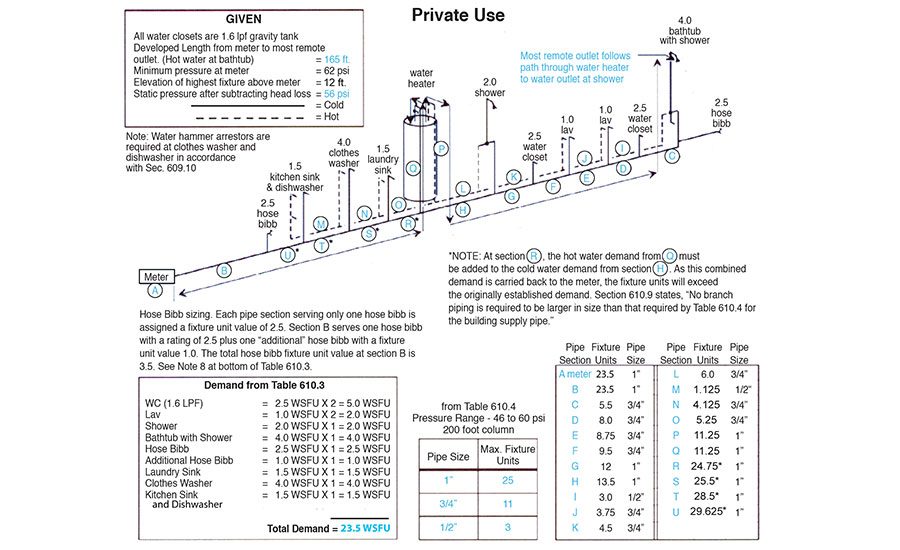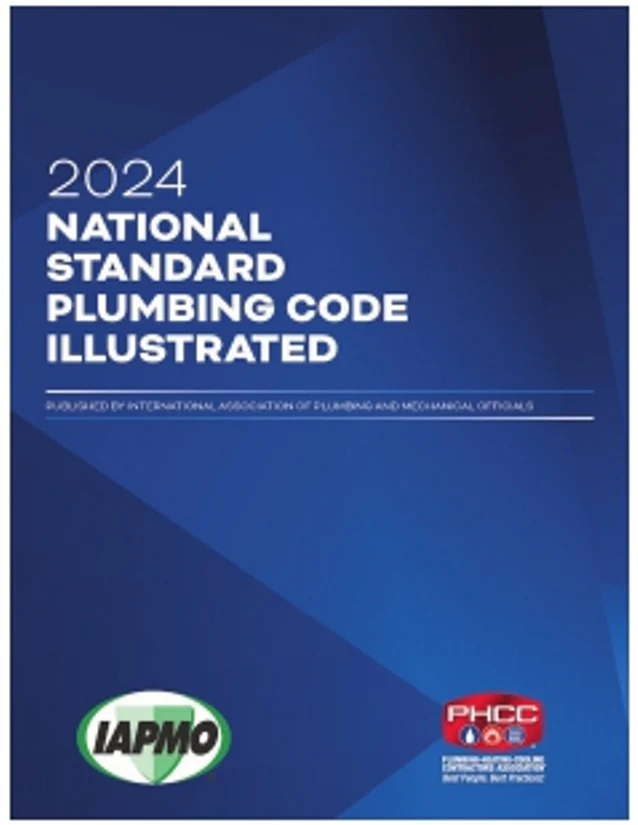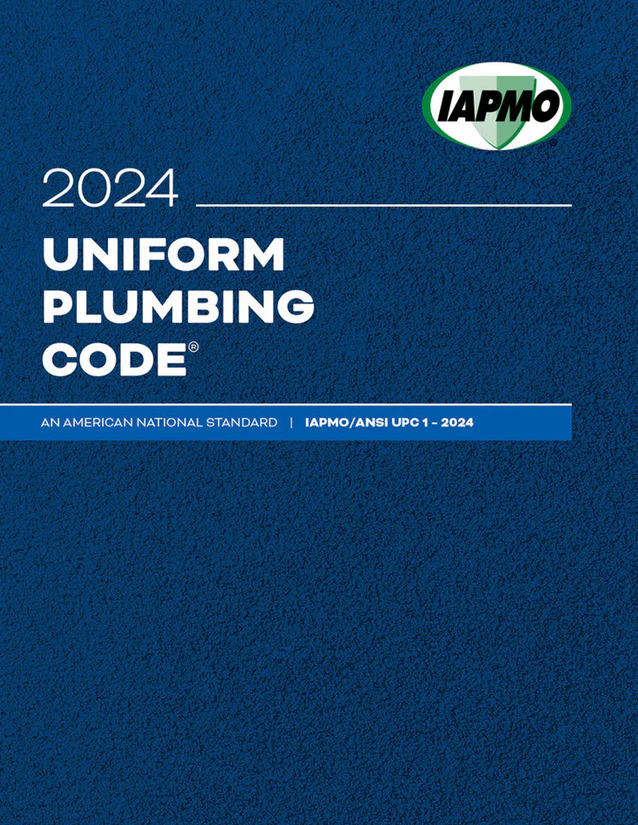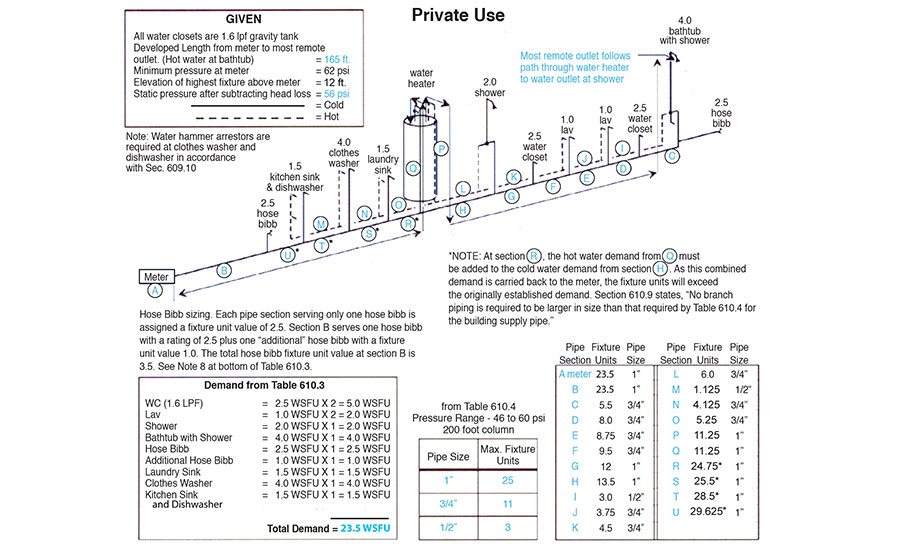Fixture Units Table 610.3: Uniform Plumbing Code
Because if we had wanted to do math we’d have applied at Google




I sometimes wonder how half of American couples don’t starve to death. Every night, the same conversation happens all across the country and, perhaps, the world:
“What do you want for dinner tonight?”
“I don’t know, what do you want?
“I don’t know, do you have a taste for anything?”
“Not really, why don’t you just pick something?”
“I always pick, can’t you just pick something?”
Eating is a basic human need we all must perform in order to not be, you know…dead. Why is selecting something to eat with your significant other so hard? Well, I can’t speak for everyone, but when my wife asks me why I don’t just pick something, I tell her, “I had to make decisions all day long at work, I don’t want to come home and make more decisions.” So far, that response has not resulted in my no longer having to make dinner decisions. The reality is everyone makes decisions all day long and no one wants to have to keep making them after hours. Wouldn’t it be nice if someone just went ahead and figured out dinner for you?
Although the plumbing code can’t solve your dinner dilemmas, it does figure some things out for you. For example, Table 610.3 in the Uniform Plumbing Code provides a matrix of fixture unit values for various fixtures so you do not have to figure this out on your own. I have seen the math that goes into figuring these values out and it is ugly. I can’t tell if I am looking at mathematical equations or a conversation between two aliens about what to have for dinner. This table and the fixture units it contains take care of that for you.
Table 610.3 lists the water supply fixture unit equivalents for common plumbing fixtures installed in private, public, and assembly occupancies. A water supply fixture unit is a numerical load factor used to compare the relative load-producing effects of one type of fixture to another type of fixture. When the concept of water supply fixture units was originally developed in Methods of Estimating Loads in Plumbing Systems (BMS65), an advanced method of probability and a select comparative scale ranging between 1 and 10 was chosen. As a result, a lavatory had a numerical load factor of two fixture units relative to a flushometer valve water closet having a numerical load factor of 10 fixture units. All other fixtures had relative values in between. Since the 1992 Energy Policy Act fixture unit values have been reduced to reflect the reduction of flow rates mandated by the act.
Water supply fixture units are not to be confused with drainage fixture units that were based on a different scale and a different probability algorithm. A drainage fixture unit is based on the relative discharge of one type of fixture as compared to the discharge of another type of fixture. For example, a bathtub installed in a private-use occupancy is assigned four water supply fixture units. This same bathtub is assigned only two drainage fixture units.
Another factor affecting the number of water supply fixture units assigned to a specific fixture is the probability of simultaneous use. Where three 1.6 gpf tank water closets are installed in a private-use or even a public-use occupancy, the probability that all three will be flushed at the same time is quite low; however, where installed in an assembly occupancy, the probability of simultaneous or near simultaneous flushing is quite high. This factor is the reason the water supply fixture unit rating assigned to this fixture is 2.5 for private and public use and 3.5 for assembly use.
The water supply fixture unit values shown in Table 610.3 represent the load on the cold water building supply. When sizing for the building supply pipe according to Section 610.8, you would utilize the listed fixture unit values in Table 610.3. When sizing for hot and cold water branches, then it is permissible to use 75 percent of the listed fixture unit value only for fixtures having both hot and cold water connections. For example, the fixture unit value for a lavatory is one fixture unit. This value represents the load when sizing the cold water building supply. When sizing the separate hot and cold water branches, the fixture unit value would be .75 for each branch. This may not be significant for small systems, but for larger systems this may result in reduced pipe size and cost savings.
Table 610.3 also establishes the minimum pipe size of a given fixture branch. For example, a clothes washer will have a minimum fixture branch pipe size of ½-inch. It will be assigned a fixture unit value of four water supply fixture units in private use and four WSFU in public use. There is no value for assembly use because it would not apply to a clothes washer.
As with any table in the code, the note section at the bottom of the table is very important as to the use of the table, and in this case to sizing the water supply system. Following is a review of these notes:
The minimum fixture branch pipe size applies to the cold branch pipe for a cold-only supplied fixture. It also applies to both the hot and cold fixture branch size for a fixture supplied with hot and cold water. For example, a clothes washer fixture branch hot water supply is ½-inch and the cold water supply is ½-inch.
For fixtures or appliances not listed in Table 610.3, one must acquire the gallons per minutes flow and establish the frequency of use from the fixture manufacturer. If there is a comparable fixture, the installer may use that fixture value for the new fixture.
This note allows the system designer to apply a 75-percent method to design the water supply system. In calculations determining the total demand of the cold water supply, the fixture would be assigned the total fixture unit value. A clothes washer would be assigned four WSFU when determining the meter and building supply line. Where the branch servicing the fixture tees off from the main, the branch may be sized using 75 percent of that WSFU value. The branch serving the clothes washer would be assigned three fixture units. This method will provide benefits only if it is a large system. It could allow for a reduction in branch sizing, which could also save cost and water usage. However, the average plumber, when needing to size a system, will usually be working on a small system that would not benefit from this method. See Figure A for an example of the 75-percent method of sizing branches.
The size listed in the minimum fixture branch size is an interior diameter or nominal size. An assignment of ½- inch copper pipe would actually be five-eighths of an inch outside diameter pipe, not one-half of an inch outside diameter.
As stated earlier, the table was designed for intermittent flow and not a continuous flow or use. For sprinkler heads that have a continuous flow, the gallons per minute flow must be determined and applied to the system demand where it occurs.
The term “assembly” is further defined in Table 422.1 as Assembly Occupancy — A-1 through A-5.
Section 610.10 applies to these fixtures when supplied with flushometers. Thus, the fixture unit value of Table 610.10 and method of sizing contained within the table will be used for these fixtures.
Table 610.3 assigns a hose bibb 2.5 WSFU. When there are multiple hose bibbs on the system, the user must follow Note 8. For example, assume there are three hose bibbs on a system. When determining the total demand as per Section 610.7, they would be assigned fixture units in this fashion, one hose bibb at 2.5 WSFU, one additional hose bibb at 1 WSFU and one more additional hose bibb at 1 WSFU for a total of 4.5 WSFU. This also applies if a branch or line segment in the system serves the three hose bibbs. If there were two hose bibbs on a common branch or segment, one hose bibb would be assigned 2.5 WSFU and the other hose bibb would be assigned 1 WSFU for a total of 3.5 WSFU. It makes no difference which hose bibb is assigned: one fixture unit or 2.5 fixture units; the installer is sizing the demand on a segment of pipe and not on the hose bibbs themselves. If there is one hose bibb on a branch, it is assigned 2.5 WSFU.
As I mentioned earlier, the math involved to determine fixture units and the probabilities of simultaneous use and all of the other factors needed to properly determine fixture units is a nightmare. Luckily Table 610.3 does all that for you. Now, with regard to dinner this evening, you are on your own. I have to convince my wife to pick something for dinner myself. Maybe I will let the kids decide.
"This article was originally posted on ww.reevesjournal.com."
Looking for a reprint of this article?
From high-res PDFs to custom plaques, order your copy today!











